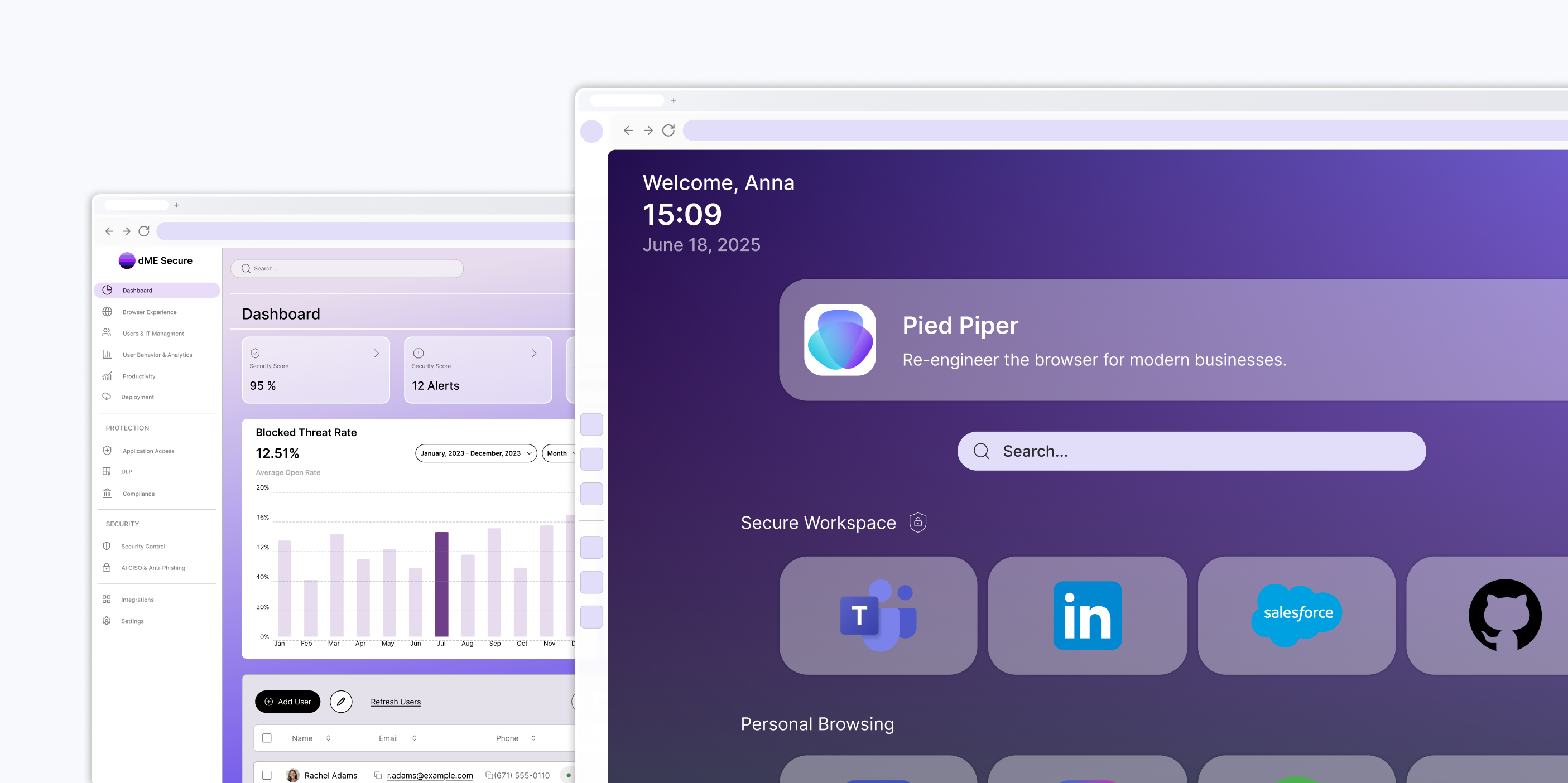What Is a Secure Enterprise Browser?
Why the browser is now the most strategic control point in enterprise security, and what IT leaders are doing about it.



The Hidden Gap in Your Security Stack
The browser started as a consumer tool. But over the last decade, it quietly became the enterprise’s primary workspace. Employees now spend most of their productive time in the browser — with Google reporting that knowledge workers average 63% of their time there, and 48% of business-critical apps are now browser-based.
Yet the browser has barely evolved to meet enterprise needs. It offers no visibility, no data control, and no native enforcement. This has made it the most overlooked, and most targeted, part of the modern enterprise.
For CISOs, CIOs, and IT teams, the question is no longer how to secure the browser, but how to turn it into a security asset.
What Is a Secure Enterprise Browser?
A secure enterprise browser is a purpose-built browser designed to make everyday work in SaaS and web apps secure, compliant, and controllable, without changing how users work.
Unlike traditional browsers, which operate independently of enterprise policies, a secure enterprise browser is tightly integrated with the organization’s identity, context, and risk posture.
It acts as both a productivity tool and a policy enforcement layer, delivering native protection at the point of access, without requiring VPNs, agents, or proxies.
Why the Traditional Browser Model No Longer Works
Most organizations rely on legacy browsers like Chrome or Edge, wrapped in additional tools like CASB, VDI, or MDM. But this patchwork approach leads to blind spots, high costs, and degraded user experience. Common issues include:
• No visibility into SaaS usage, sessions, or data flows
• No ability to enforce granular controls on SaaS apps
• No protection when users access data from unmanaged devices
• Limited options to control how employees use tools like ChatGPT
• Expensive infrastructure (like VDI) required just to contain access
As SaaS sprawl and hybrid work accelerate, this model breaks down.
A New Layer of Defense: The Secure Enterprise Browser
Instead of securing the browser from the outside, a secure enterprise browser builds protection into the browser itself. That means IT and security teams can control how data is accessed, shared, and used — all within the browser where work actually happens.
Key capabilities include:
• Fine-grained SaaS access policies tied to identity and device posture
• Browser-level DLP to prevent copy-paste, uploads, downloads, and screen capture
• Real-time governance of AI tools like ChatGPT
• Full visibility into sessions, user activity, and policy violations
• Step-up authentication and session cloaking for sensitive workflows
• Native support for unmanaged devices without the need for VDI
All of this is configured and monitored through a centralized management console built for enterprise IT.

Where It Fits in the Modern Security Stack
The secure enterprise browser does not replace every security tool, but it dramatically simplifies and strengthens the architecture.It complements Zero Trust initiatives by enforcing access decisions at the point of use.It reduces dependency on legacy systems like VDI, CASB, or VPN.
And it gives IT teams one unified control point for browser-based work, across all users and devices.
Why IT Leaders Are Moving to Secure Browsing
The shift to SaaS, hybrid work, and generative AI has fundamentally changed how data flows in the enterprise.Every critical interaction now happens in the browser.
Instead of trying to bolt on controls from the outside, IT leaders are rethinking the browser as a strategic layer.
The secure enterprise browser offers:
• Stronger security
• Simpler architecture
• Better user experience
• Lower operational cost
• Greater compliance and audit readiness
It transforms the browser from a liability into a control point.
How dME Network Reinvents Enterprise Security
The dME enterprise browser reflects how modern work gets done in SaaS apps, AI tools, and the open web. It combines security, visibility, and productivity in the browser environment, without disrupting how people work.
The dME product suite includes a fully managed enterprise browser, a lightweight extension that brings enterprise-grade protections to any browser, and a centralized management console for setting policies, monitoring activity, and responding to risk. Together, they give IT teams a unified way to manage and protect browser-based work across all environments.
Want to see how it works in practice? Book a demo and see how our secure enterprise browser delivers Zero Trust access, data protection, and visibility without the complexity of VDI or VPN.

